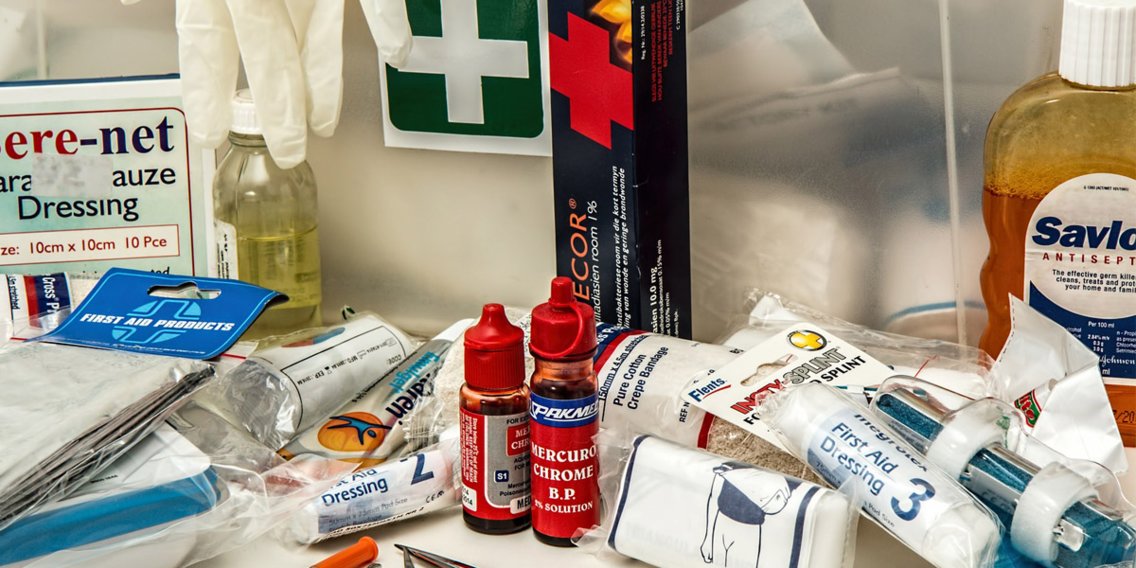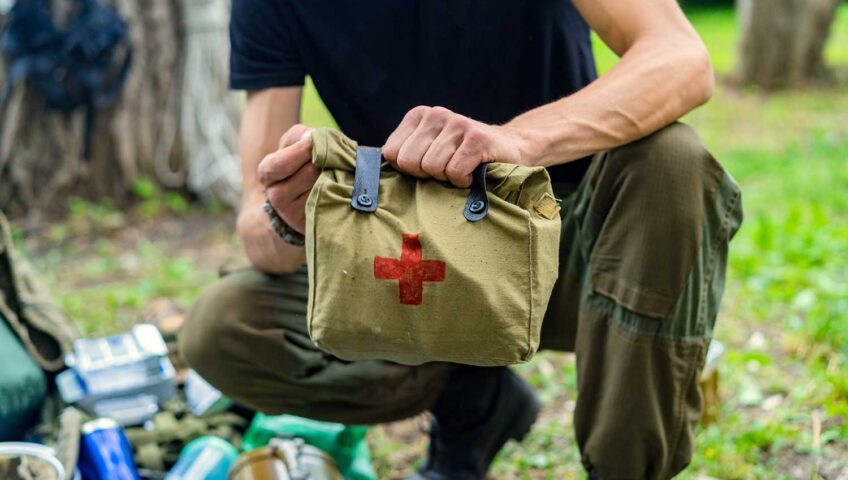How to Pack a Professional Safari Travel First Aid Kit : A Safari travel first aid kit is essential when going on safari in Africa especially in Uganda, Rwanda, Tanzania and Kenya to ensure stable and secure health care on the road. Our travel advisory guide below looks at how to pack a travel first aid kit on your safari especially for first timers.
A first aid kit is an essential piece of equipment on any gorilla trekking tour, wildlife safari and adventure, but most travelers aren’t sure exactly what they need to take with them. So, here is an expert guide on how to pack a first aid kit and what to include in it.
Many travelers around the world have helped each other to strap up a sprained ankle or two on jungle treks, dressed countless small cuts and wounds, and even once cleaned and treated a dozen small leech bites on the legs of an unlucky trekker, among other things.
Thankfully most of the incidents in most cases are minor. But whether you are on a gorilla trekking tour, wildlife safari, mountain hiking or a rafting adventure be sure to always encounter accidents and injuries. As any experienced traveler or health professional will tell you, things can and occasionally do go wrong on any trip and taking a well-stocked kit with you is always advised.
A well-stocked first aid kit on your safari is vital but there is absolutely no need to go overboard because you certainly don’t need to carry around the entire stock cupboard of your local pharmacy.
Over the years we have realized that most first time travelers carry commercially available emergency first aid kits and am pretty sure there is absolutely nothing wrong with these packs at all and in fact they are excellent and, in a pinch, I would still recommend them to any traveler. However, over the years, with a lot of East African travel experience, I have refined my own kit to reflect what I will use out on the road and what I know what will make for a much better first aid kit for the average traveler too.
The best first aid kit on your safari are simple but varied and will have a variety of dressings and equipment to deal with the absolute basics. More importantly, they can be used with little or no training. So what items should you include? Here are our picks for the essentials.

Plasters (Bandages)
It goes without saying that these are an absolute essential in any first aid kit on your safari. The most common form of minor injury is a cut or a graze, so it is always a good idea to carry a handful of plasters in a variety of sizes. If you think you will be doing a lot of trekking on your travels and you aren’t used to that form of exercise, then some blister plasters are a good idea.
Elastic bandages
For when you have something a bit bigger than a cut, basic elastic bandages are useful for keeping small dressings clean and in place until you can get some medical attention. Remember you’re only going to use them in an emergency and hopefully only until you can get some professional medical care therefore you don’t need too many of these.
Small scissors
These come standard in any commercially available first aid kit though you can buy them separately. They are useful for trimming gauze or bandages to size. Always be careful if you do carry scissors to ensure that your first aid kit goes in your checked bag when you are in transit or else airline security will take them off you.
Gauze
Gauze is the medical jack of all trades. Never carry a first aid kit on your safari without a supply of gauze in it because you can’t imagine how many times it will be useful on your safari. It can be used to apply pressure to a wound, clean an injury, soak up blood, help stop bleeding, and even form part of a basic dressing for small to medium wounds.
A clean wound and a layer of gauze kept down with either tape or a bandage is often enough to allow time for you to go and get it looked at by a professional. The best type of gauze to carry in a first aid kit is individually wrapped sterile squares. This eliminates the need to cut them to size when you need them quickly and obviously makes it easier to keep the wound clean and sterile.
Surgical tape
Surgical tape is one of those essential emergency items for when you need to apply and secure gauze or a bandage to a wound although plasters can do the same job if need be.
Tweezers
Tweezers are another item that often come standard in most first aid kits and can be useful for pulling out splinters, getting out little bits of stone or dirt when cleaning a wound, or any number of other practical uses.
Antiseptic wipes
For some reason this tends to be the one thing most people overlook when thinking of first aid, but antiseptic wipes are an absolute essential in any good pack. No one wants a cut or wound to get infected, and antiseptic wipes are perfect for cleaning it before applying a dressing. Just a small handful will suffice for most packs. Like most basic items, they are easy to replace at any pharmacy when you run low.
Condoms
Apart from the obvious benefits of staying safe sexually, these handy little items can be used as emergency water carriers or even filled with ice as an emergency ice pack.
Pain relief tablets
A small pack of basic paracetamol is usually sufficient however ibuprofen or other similar medications are fine too. It doesn’t have to be fancy, basically whatever you normally take for pain relief when you have a headache or minor pain.
Loperamide tablets
Also known under a variety of brand names such as Imodium, this is useful for stopping diarrhea for short periods when you need to catch a bus or train. Remember, these are for those emergency moments only when you are actually in transit, as they do not cure diarrhea and shouldn’t be used when you can rest up for a couple of days. (Normally the best way to treat diarrhea is to let everything pass through your system normally and drink plenty of water to replace lost fluids.) If you use them sparely, properly, and as directed on the pack, loperamide tablets can be useful additions to any travel first aid kit.
Antihistamine cream
It happens to all of us on our travels: we get bitten by some form of insect and end up with a painfully itchy bump or rash. Don’t worry, the absolute majority of the time the bumps and stings aren’t anything to worry about at all, but they are damned annoying! This is why a good antihistamine cream is a useful addition to help control the itching and swelling.
Antibacterial creams
It’s also a good idea to carry antibacterial creams like Neosporin for any cuts and scrapes you get. This will help heal them faster as well as prevent any possible infections.
Obviously, this list can be tailored or added to depending on your trip needs and any good first aid kit should also include any specific or individually prescribed medication or antimalarial. For the majority of travelers, however, the items and kit listed above will cover the absolute majority of basic incidents and accidents.
So now I am pretty sure you can pack up your own little first aid kit and keep it stashed in your pack for emergencies. Chances are you will probably never use it and I hope you never need to but if you have one at least you can enjoy your travels with peace of mind and be safe in the knowledge that you are prepared.
CONTACT US for information about safari First Aid Kit or to Book your safari in Uganda


